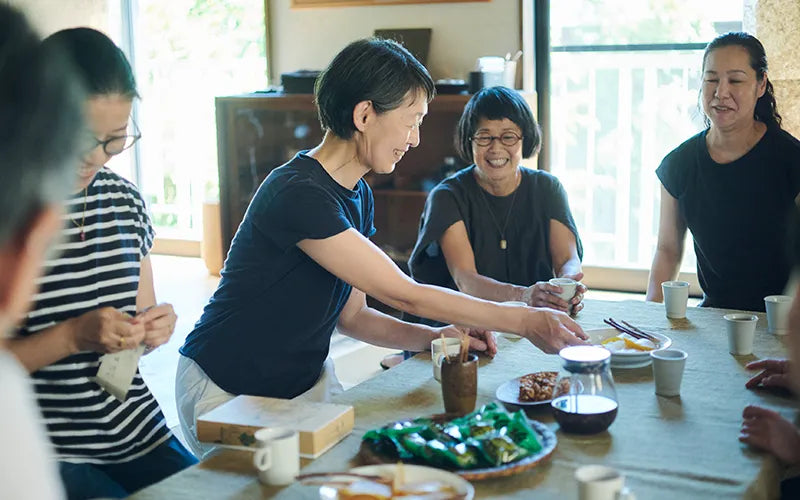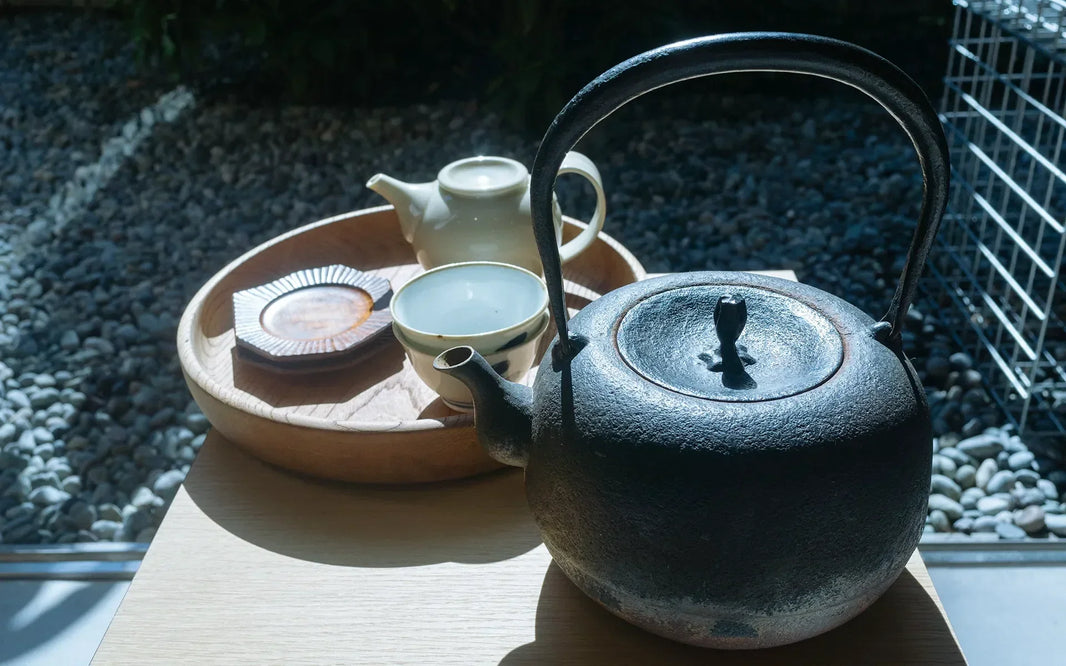"These items offer excellent suggestions for the increasingly important future mindset of 'not overproducing and using things carefully.' They openly state that their products are durable for long-term use, and can later be repurposed as cleaning cloths. This approach seems indispensable for future manufacturing."
To all Hana-fukin users, thank you for your patronage. We are pleased to announce that our signature product, the Hana-fukin, has received the Good Design Long Life Design Award. The above comment is an excerpt from the judges' award statement.

The Long Life Design Award honors designs that maintain their status as beloved standards over many years. This is an award we share with both our users and the craftspeople behind the scenes.
Reading the award comments made me realize anew that sustainability might require manufacturing without strain. While we've discussed Hana-fukin many times before, today I'd like to delve deeper into the manufacturing practices behind it.
We spoke with Miyoko Nakagawa, who conceived the Hana-fukin, and Mutsuko Tade, who has accompanied its production since the early days.

Functionality Born from Rational Manufacturing
"How is Hana-fukin different from other gauze cloths?" This is a question we often hear in our stores.

What distinguishes it from other gauze cloths is that it's made with two large pieces of fabric woven in the original loose-weave "mosquito net" structure.
Beyond the quick absorption and drying properties from the loose weave, being larger than typical cloths means it absorbs well when folded, and being double-layered yet thin means it dries quickly when spread out. It's a product that maximizes the functionality of gauze fabric.
This large, thin Hana-fukin emerged from the idea of repurposing the function of "mosquito nets," which were declining with the spread of air conditioning, but it was also a design born from rational manufacturing principles.

"The 58x58cm size comes from folding the fabric roll exactly in half. This eliminates waste. The material determined the size," (Nakagawa)
Since Nakagawa began as a ramie wholesaler, fabric was literally money. They say there was no concept of wasting fabric. Come to think of it, I often hear product planners say even now, "This shape minimizes fabric waste." The philosophy of waste-free manufacturing deeply rooted in Nakagawa continues to be inherited.
As a result, Hana-fukin became larger than conventional cloths, leading to various uses beyond dish-drying, such as food preparation and lunch wrapping.

Moreover, the double-layer thin design also had its reasons:
"The scale was different then, so we had home sewers doing the stitching. The more layers you stack, the more skill needed for sewing. With regular home sewing machines, it was better not to stack too many layers. Since we weren't making these alone, ease of manufacturing was a crucial consideration," (Nakagawa)
As a result, the drying speed was exceptional. When hung to dry, it retained the original aesthetic of mosquito netting, becoming a beautifully translucent sight.
Craftsmanship Born from Material Encounters Worth Preserving
This translucent appearance, they say, is what led to the encounter with gauze fabric.
"It was about 25 years ago. Unlike now, we didn't have stores nationwide, certainly no name recognition, just quietly running our shop in Nara-machi. Thinking about how to attract customers, we held various themed exhibitions.
One of these was titled 'The-End― Contemplating Endings,' where we had various artists create end-of-life items like funeral urns. For creating an ethereal atmosphere, we hung 'mosquito nets'—our first encounter with the material," (Nakagawa)


Touching it revealed a soft, pleasant texture and good absorption. They learned that local craftspeople were struggling as air conditioning reduced demand for mosquito nets.
The desire to preserve this beautifully textured material and local craftsmanship led to reimagining it as kitchen cloths while maintaining its functionality.

"Even as kitchen cloths, plain white seemed uninspiring. Wanting to add colour to kitchens and dining tables, we dyed them in flower-like colours," (Nakagawa)
Grasping a material's essence, learning from its wisdom, and updating it for modern living. This innovation-from-tradition approach at Nakagawa began with the Hana-fukin.

Over 25+ years, they say there were many failures in cloth-making.
"We've had nothing but failures. Working with craftspeople, we'd try this and that, but things wouldn't sell. Sometimes we'd realize a specification was too difficult for continued production. Some products ended due to environmental concerns," (Nakagawa)
"But Hana-fukin alone has continued. While packaging has changed, the original size, thickness, weave density, and colours remain unchanged. I wonder why—I think it's because people use them, but also because I've worked with the same craftspeople throughout my entire career since joining the company, making it especially meaningful to share news of this award," (Tade)
Many Hand-Crafted Processes Supporting One Cloth
True to the words "nothing but failures," this seemingly simple product involves complex manufacturing.

For instance, in the "weaving" process, slightly loose thread tension distorts the weave, while too much tension breaks threads. Craftspeople constantly move between looms, adjusting thread conditions while monitoring material, humidity, weather, and machine characteristics.

The "dyeing, sizing, and width-setting" processes determine cloth texture and color. Supported by advanced techniques in harsh 40°C factory conditions, they create the soft texture and delicate colours. The final crucial "sewing" process requires hand-operating sewing machines for each piece to join two layers of loose-weave fabric.
Thus, countless hands support the creation of each cloth.
What Long Life Design Means to Nakagawa

"While it's not something you can deliberately create, our team discussed how we need to make our newly-released tea series this spring a long-life design.
We're making this with four Nara craftspeople, visiting multiple fields together, participating in tea planting, and growing seedlings they gave us at our company. When we engage closely with craftspeople like this, we meet their children who'll inherit the business. When these children grow up and take over, we want these products to remain," (Tade)
The "preservation-minded manufacturing" inherited from Hana-fukin. This spirit flows steadily into their latest manufacturing endeavors. I wonder how it will develop in 30 years. As a fan of the tea series, I'm excited to be part of this manufacturing circle.
Hearing from the planning team reinforces how Nakagawa conducts manufacturing aimed at everyone's happiness. Not just user satisfaction, but happiness for all involved, including the makers.
Believing that this triple-win manufacturing leads to long-life designs, we continue our manufacturing, engaging one by one with Japanese materials, techniques, and customs.







